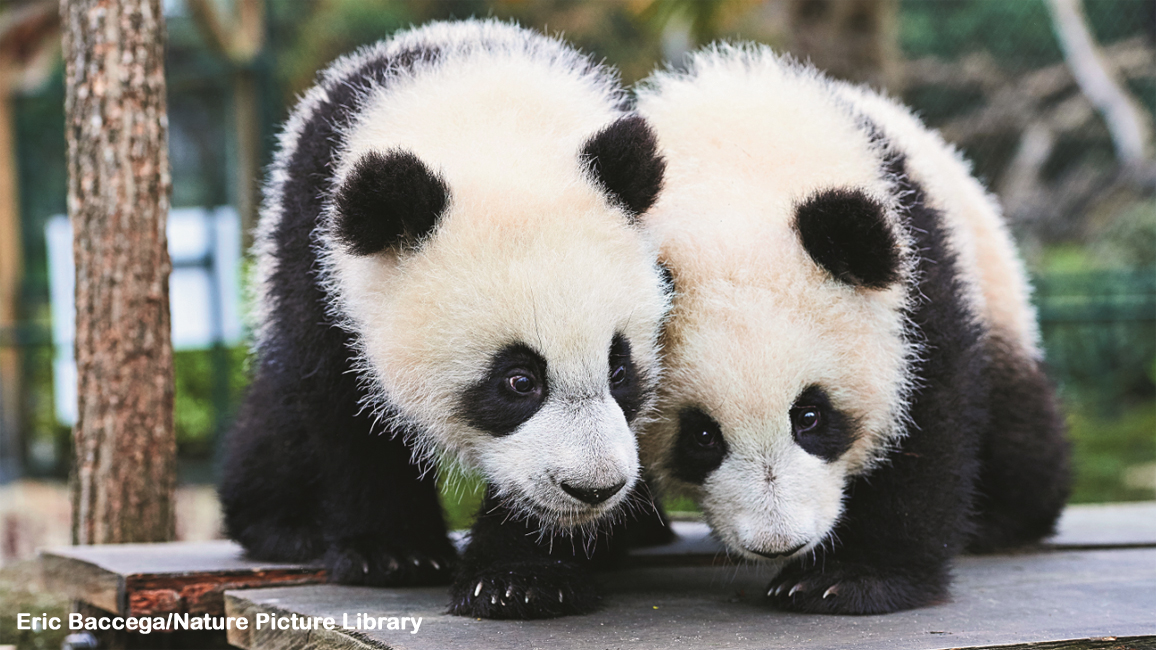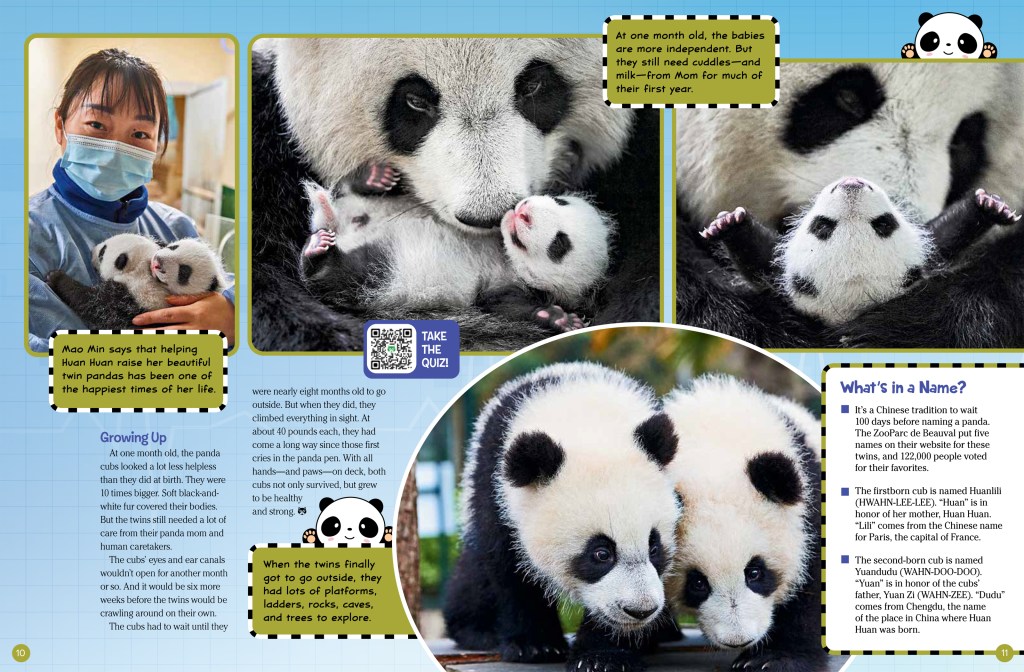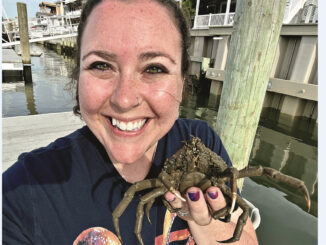
Panda Twins
By Anne Cissel; photos by Eric Baccega/Nature Picture LibraryA mother panda at a French zoo needed some help raising her tiny cubs—and she got it!

It was a quiet summer night at a zoo in central France. Suddenly, loud shrieks echoed through the giant panda building. A panda mother had given birth to a female cub. The baby was crying loudly. Seven minutes later, her sister was born, and the noise doubled!
The zoo workers outside the panda pen were delighted to hear those shrieks. The loud cries told them that the cubs were alive and probably healthy.
But the pandas’ mother, Huan Huan (HWAHN HWAHN), needed help right away. When pandas have twins in the wild, only one of the cubs usually survives. Even in a zoo, both cubs may not live. Huan Huan had given birth to twins before. But, sadly, one died. The pandas’ caretakers at ZooParc de Beauval (boh-VAHL) were determined that both cubs were going to make it this time!

PROTECTING PANDAS
Wild giant pandas used to live throughout central, southern, and eastern China. Now, they live only in a few forests in the mountains of central China. Much of the pandas’ habitat has been slowly taken over by people. But people have been helping them, too. Land with plenty of bamboo has been set aside for the pandas. (An adult eats 20 to 80 pounds of bamboo each day!) And zookeepers work hard to help mother pandas raise healthy cubs.
CUB ROTATION
When baby pandas are born, they are pink, mostly hairless, blind—and extremely helpless. Each of Huan Huan’s cubs was only about the size of a stick of butter. Their mother weighed more than 200 pounds! But she knew how to handle these delicate creatures. The mama panda would gently pick up a cub in her mouth, cuddle it close to her, and let it nurse.
Two experienced panda caretakers from China traveled to France to help the French zookeepers. One of the caretakers, Mao Min, had helped raise Huan Huan when she was a young panda back in China. Min can’t be sure, but she thinks the panda still recognized her.
Early in the cubs’ lives, Huan Huan cared for only one cub at a time. The siblings were rarely together. While one cub nursed, the other one would spend time in an incubator, which kept her warm. This cub would also be given health checks. Taking a baby away from its mother must be done very carefully. Min or her fellow caretaker would reach through the bars of the pen and swiftly take a twin. The caretakers would talk to Huan Huan and make panda-like sounds. The mother panda was very calm and cooperative!

GROWING UP
At one month old, the panda cubs looked a lot less helpless than they did at birth. They were 10 times bigger. Soft black-and-white fur covered their bodies. But the twins still needed a lot of care from their panda mom and human caretakers.
The cubs’ eyes and ear canals wouldn’t open for another month or so. And it would be six more weeks before the twins would be crawling around on their own. The cubs had to wait until they were nearly eight months old to go outside. But when they did, they climbed everything in sight. At about 40 pounds each, they had come a long way since those first cries in the panda pen. With all hands—and paws—on deck, both cubs not only survived, but grew to be healthy and strong.
WHAT’S IN A NAME?
- It’s a Chinese tradition to wait 100 days before naming a panda. The ZooParc de Beauval put five names on their website for these twins, and 122,000 people voted for their favorites.
- The firstborn cub is named Huanlili (HWAHN-LEE-LEE). “Huan” is in honor of her mother, Huan Huan. “Lili” comes from the Chinese name for Paris, the capital of France.
- The second-born cub is named Yuandudu (WAHN-DOO-DOO). “Yuan” is in honor of the cubs’ father, Yuan Zi (WAHN-ZEE). “Dudu” comes from Chengdu, the name of the place in China where Huan Huan was born.

















